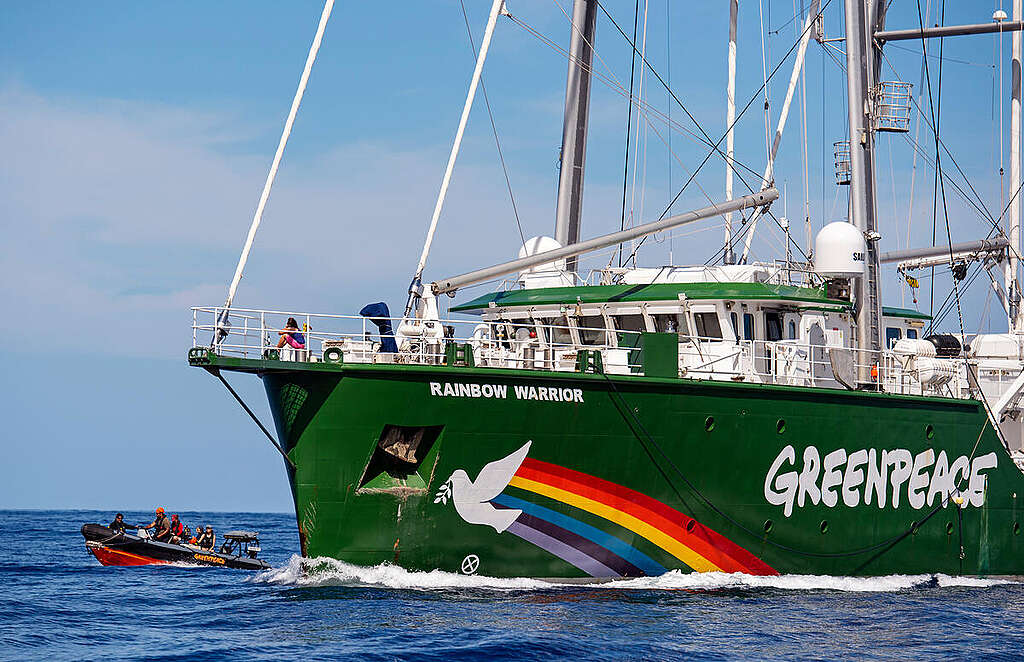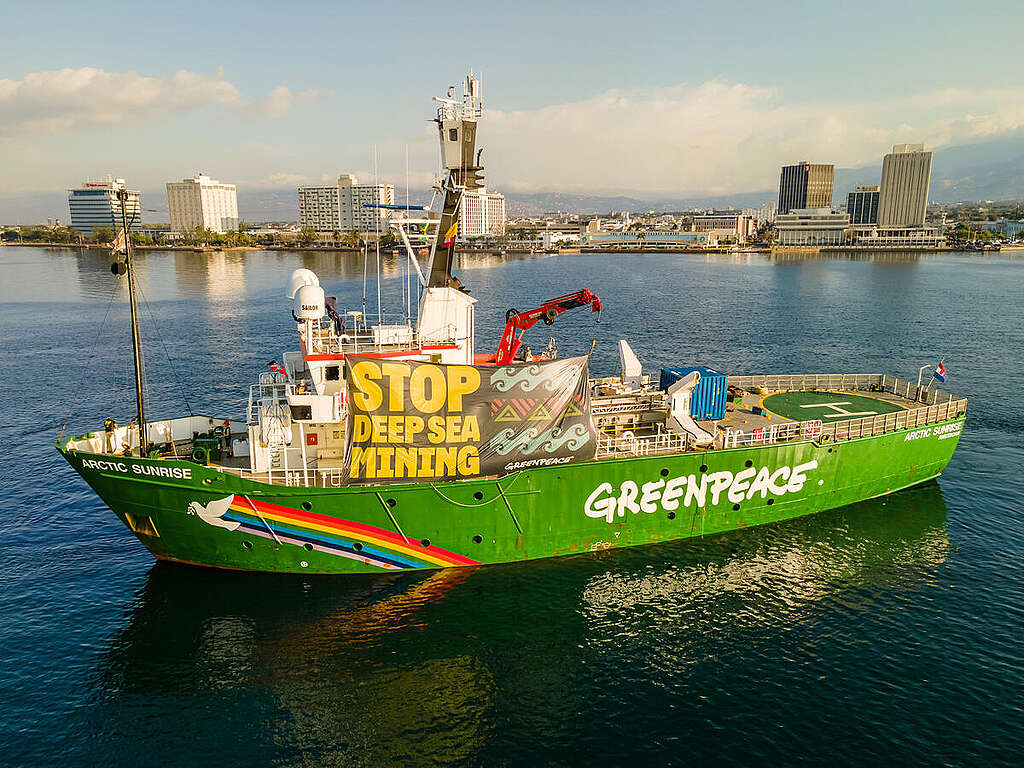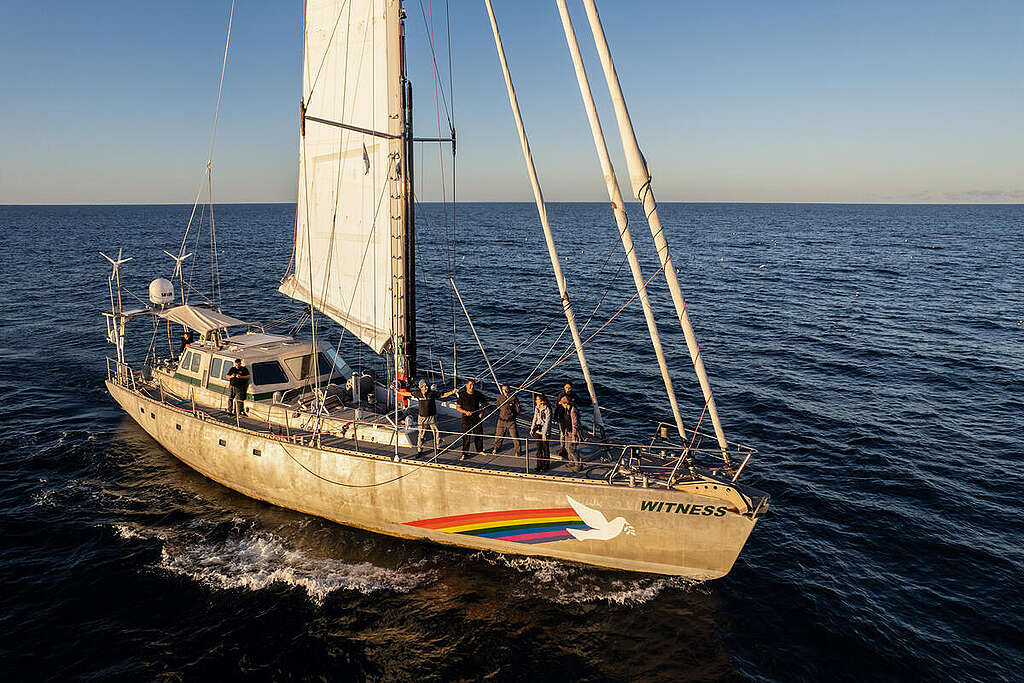The Rainbow Warrior III
Was the first ship in our fleet designed and built specifically for Greenpeace. That means the Rainbow Warrior is not just one of the most environmentally-friendly ships ever made; but also a campaigner’s dream.
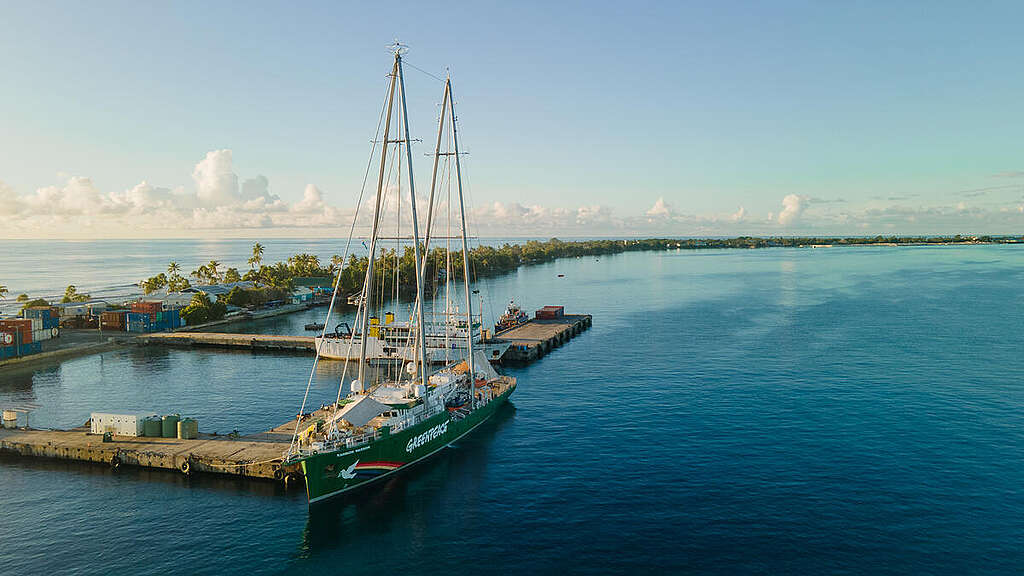
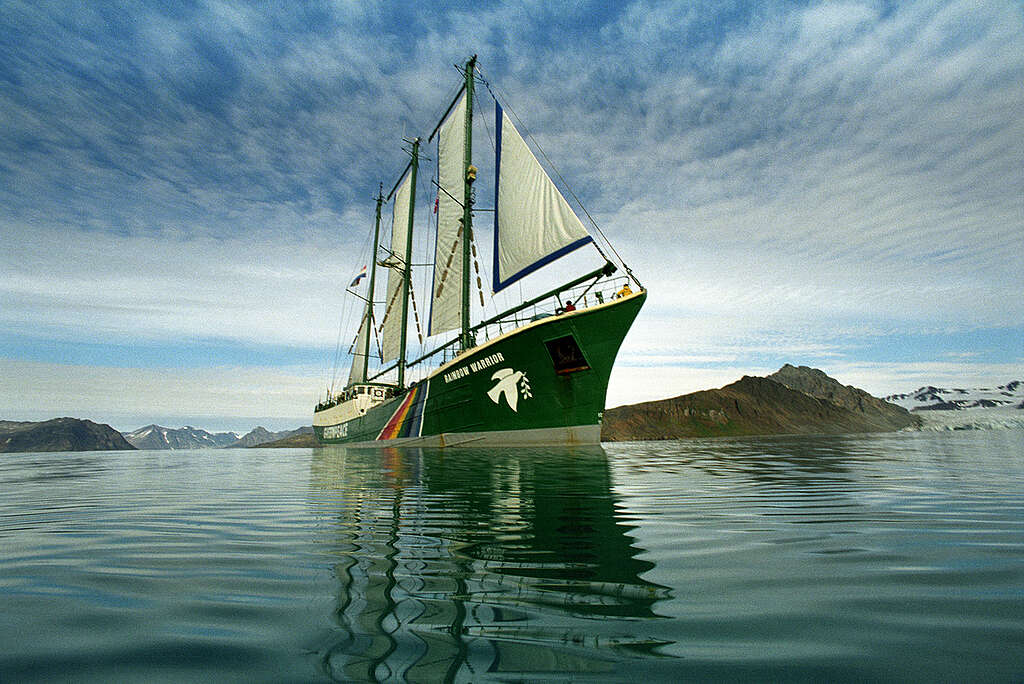
Retiring of Rainbow Warrior II
After 22 tireless years at the campaigning frontline, the second Rainbow Warrior retired from Greenpeace life on 16 August 2011. It was the replacement for the original Rainbow Warrior which was bombed in 1985 by French agents (read more here).
Rainbow Warrior II helped end nuclear testing in the Pacific, blocked coal ports and closed down destructive fishing operations (to name but a few).
It’s a very proud legacy – and the third Rainbow Warrior, which entered operation on 14 October 2011, is better equipped to carry it on than any Greenpeace ship before.
A purpose-built campaigning ship
Ever since the first Greenpeace expedition set off in a ramshackle old fishing vessel we have relied on existing vessels refitted to meet our needs. With the new Rainbow Warrior, we had the chance to start with a blank canvas for the first time.
All Greenpeace ships are special, but our new Rainbow Warrior is one of a kind. It plays a key role in our campaigns, allowing us to bear witness and take action to prevent environmental crimes around the world.
A fast and reliable vessel
The new Rainbow Warrior is as fast as many industrial vessels, with action boats that can be deployed in minutes – even in waves up to 3.5 metres high. The helicopter landing pad means we can deploy a vital eye in the sky, enabling us to spot illegal fishing operations and shipments of illegal wood.
A base for science
The ship can carry specialised equipment up to 8 tonnes in weight. It’s designed so that scientists can work on board. By supporting original scientific research we help build understanding of what is happening to our planet’s ecosystems.
A floating communications hub
The on-board satellite communications system – featuring a built-in satellite uplink – means the new Rainbow Warrior is able to stream live footage from the scene of environmental crimes directly to the world’s media.
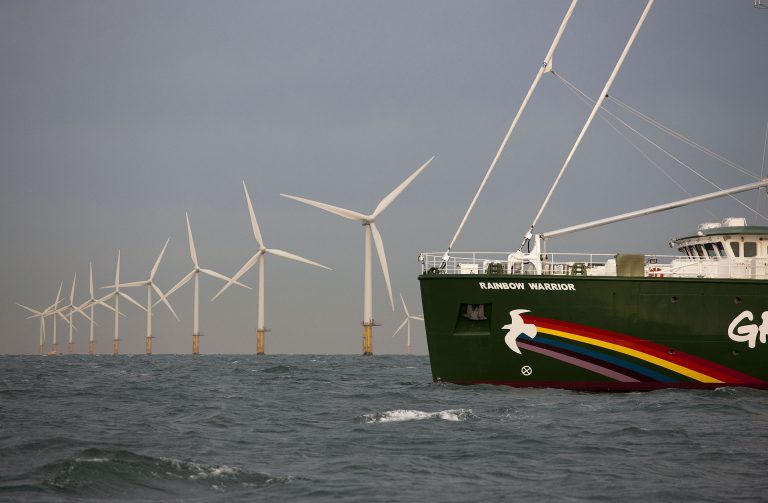
A shining example for green shipbuilding
The new Rainbow Warrior’s eco-credentials include:
| A hull shape designed specifically for superior energy efficiency |
| A-frame mast and sails – optimised for highly effective sailing |
| Electric drive system (10 knots on only 300kW) |
| Extended environmental assessment of the Ship |
| Highest environmental standards of all engines (IMO Tier-II) |
| Green ship class notation with Green Passport |
| Voluntary environmental protection class notation |
| Exhaust gas treatment, minimising NOx emissions and Particulate Matters (PM) |
| Biological treatment of sewage and grey water |
| Central filling and venting system for fuel and oils to prevent spills |
| Environmentally friendly paint system |
The making of a Warrior
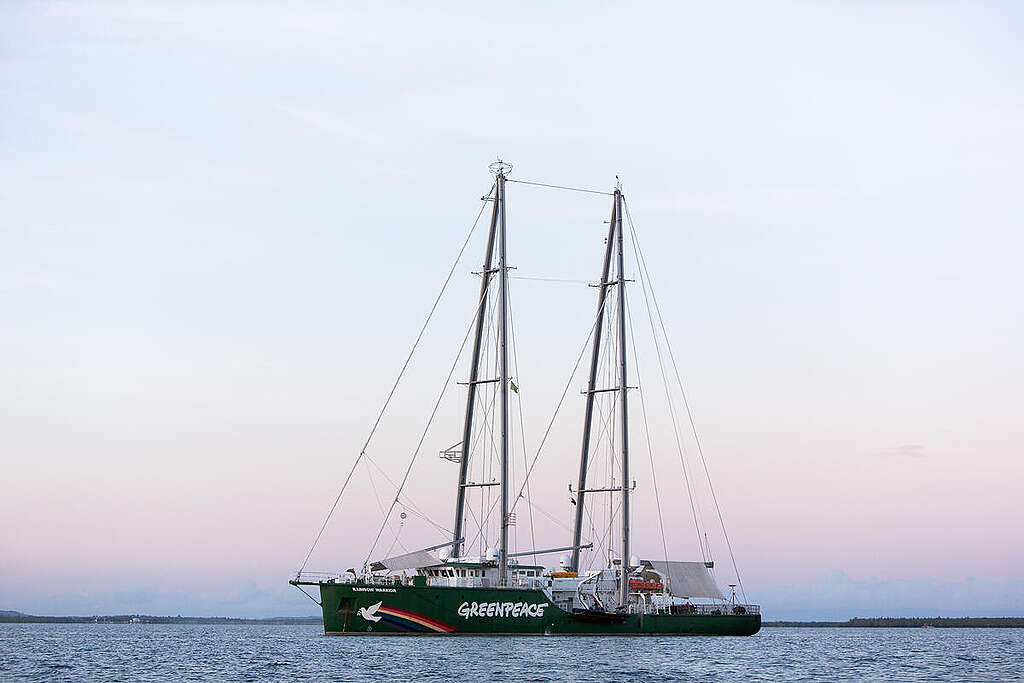
Rainbow Warrior Specifications
| Port of registration: | Amsterdam, Netherlands |
| Vessel Type: | Motor Sail yacht with helicopter landing deck |
| Class: | Germanischer Lloyd, Notations include Green Passport |
| Length Overall: | 57.92m |
| Beam (Max): | 11.30m |
| Draught (Max): | 5.15m |
| Air Draft: | 54.25m |
| Gross Tonnage: | 855 |
| Sailing Rig: | Staysail Schooner, 2 A frame mast with 5 sails |
| Sail Area: | 1255 sq metre |
| Service Speed / Max Speed: | 7 knots / 15 knots |
| Main & Auxiliary Engines: | Caterpillar, IMO Tier II Certification |
| Cruising range: | up to 9,500 nm |
| Accommodation: | 30 persons |
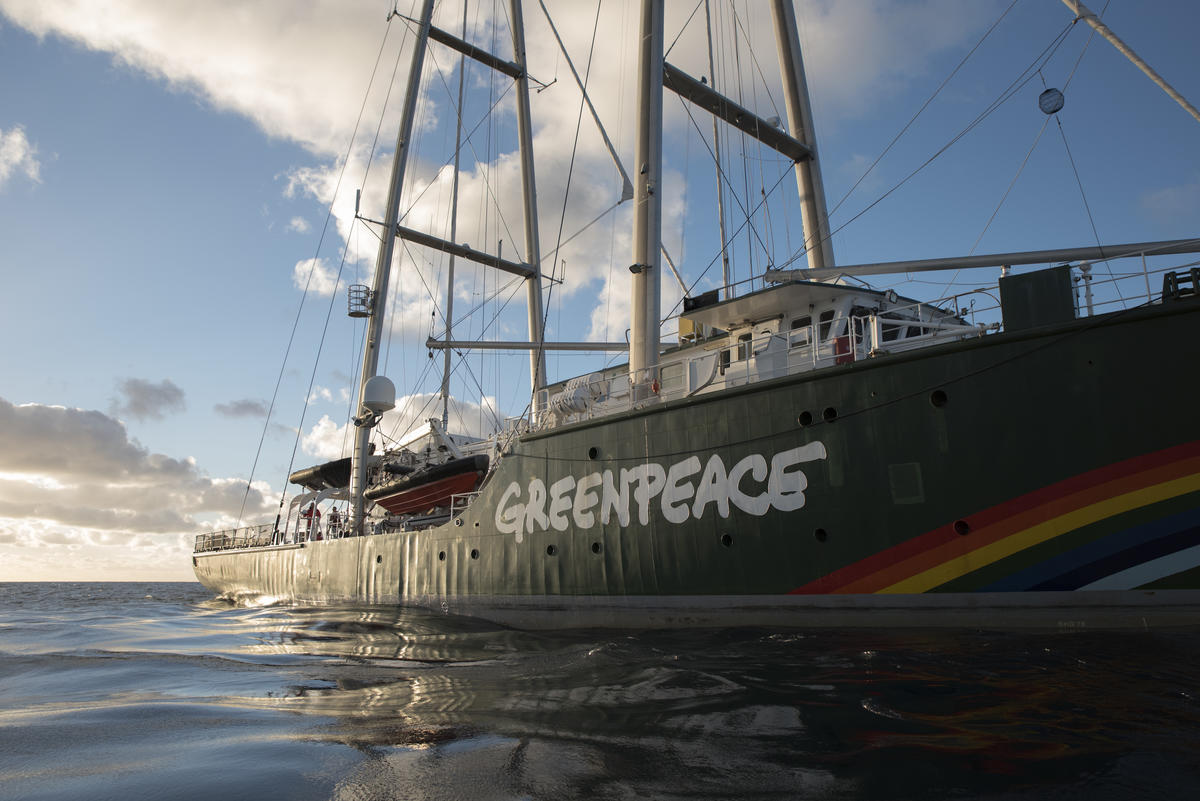
“Since setting sail in 1978 the Rainbow Warrior has been on the frontline of the struggle against environmental abuse. She is an icon of non-violent direct action and a beacon of hope for millions of people around the world.”
Kumi Naidoo, Greenpeace International’s Executive Director, said at the keel laying ceremony, which took place on 10 July 2010 – the 25th anniversary of the bombing of the original Rainbow Warrior.

